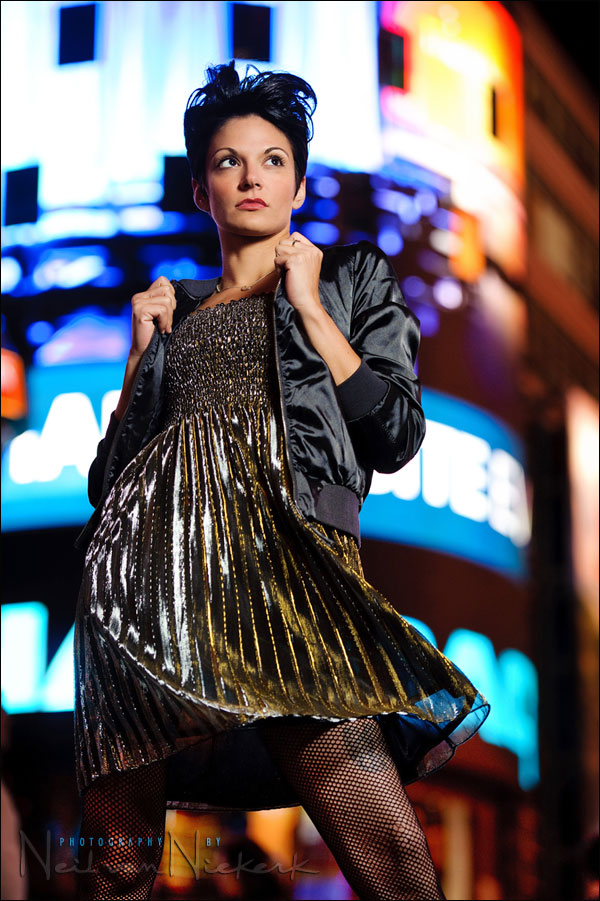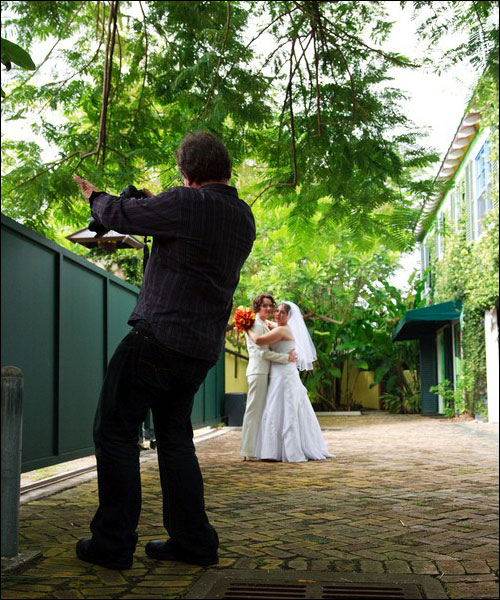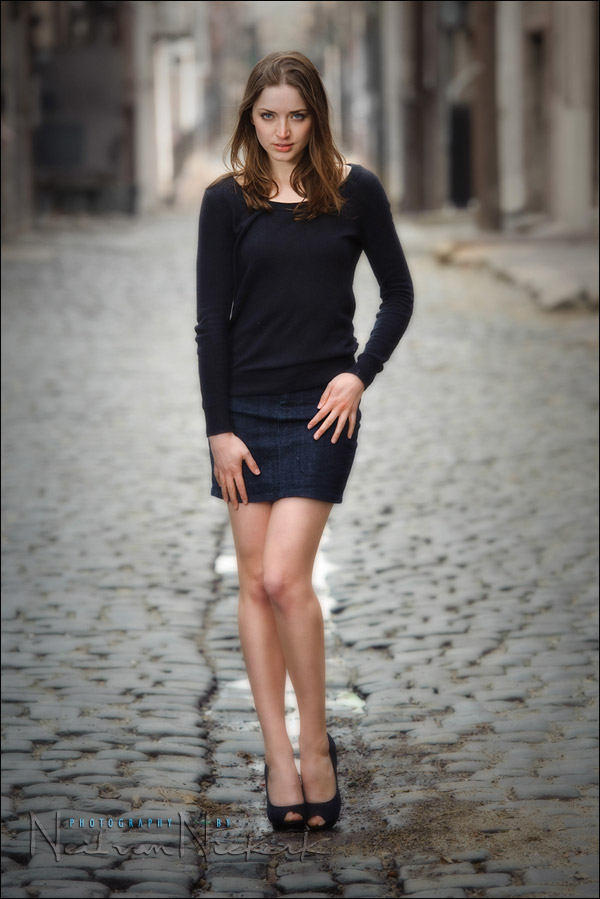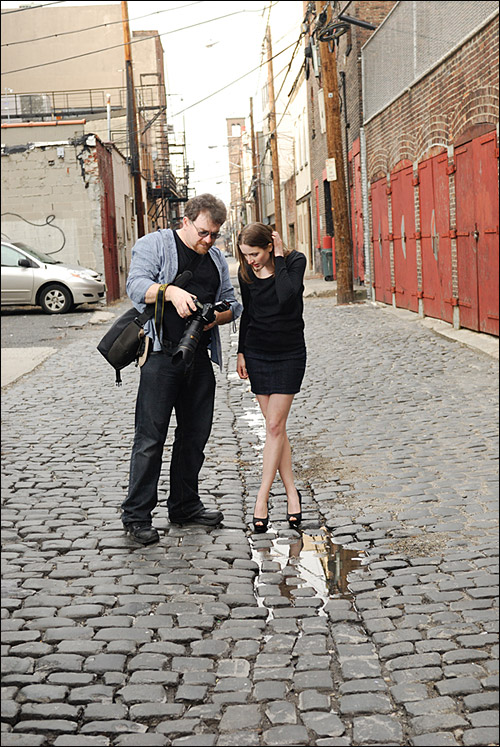
tips for posing people / working with a model
So you have a great camera and lens; and someone who is willing to be photographed and willing to work with you; and you have a great idea for a setting or backdrop … but now what? Posing your subject is something that can be quite intimidating to a newer photographer. The pressure is now on YOU to create magic .. or at least an arresting image. Leaving everything up to the model or your subject to do, or for them to come up with ideas … while you just click the shutter, makes you just an owner of a camera, and not a photographer.
When photographing portraits of people then, at some level you need to be able to pre-visualize what you want. Or, recognize when you actually have something in front of your camera that makes a good subject. The point I’m aiming at here, is that if you want to photograph portraits of people, you can’t be passive. At some level you have to exercise control, whether it is the location or the light, or some element that you add or make a decision about. You have to be active in creating the portrait. And this often means directing your subject or posing them.
In my experience, the best models aren’t necessarily the more beautiful women, but rather those who can project some personality. No shyness. I think the best models are actresses at some level. You really have to act a little .. whether expression or body posture.
The photo above is of Jessica who isn’t a professional model. But what she lacks in experience, is made up for in the attitude that she projects. And it works. She was one of the best models I’ve had. Simply because of her personality. The best models have great personalities and are quite comfortable in front of the camera. I think it comes down again to them being able to project ‘something’ towards the eventual viewer. It need not be something dramatic … it can be something as cute as a wrinkle of the nose; a half smile; a small gesture.
Okay, so that’s great if you have a model or subject who is somehow a natural at it, and needs little direction. What if you have a subject who has little or no experience? Well, this is where YOU have to step in as the photographer.
1. have your subject mirror your pose
When you want your subject to pose in a certain way … get in there and SHOW them by having them mirror your pose. Instead of giving verbal instruction such as, “move your left hand up a bit” – which can be confusing – it is better if YOU mirror her, and move your hand how you want it to. That visual cue is much easier to follow than a verbal instruction.
Same thing if you want your model (or subject) to move their shoulder a bit, or position their legs. Just show it and have then copy you, mirror image. It is funny when I do it, since I don’t look as elegant as the model. Or rather, she shouldn’t look as inelegant as I do! Which is part of keeping a photo session light and fun.
But it really does help to get in there and physically show what you had in mind. Verbal instruction can be confusing, especially with left & right and mirror image. So I very often physically demonstrate .. as anyone who has been to one of my workshops already know. ;)
Here is a photo of myself at a destination wedding where I was the photographer, where I am showing the couple what I had in mind … it might look like I am doing Tai Chi here though.

It’s just easier for your subject to follow your cue if they can see what you want.
2. do your homework; internalize a few ideas
The best suggestion I have then for posing someone, is for them to mirror your movement and positioning … which doesn’t work at all if you have no idea where to start.
It is good homework then for YOU to practice in front of a mirror. See if a specific pose or idea works.
– What can you change about the position of your hands and feet to improve the pose?
– If you hold your arm in a certain way while looking at it in the mirror, is there a fore-shortening effect?
– What happens if you bend your knee in a certain way?
And so on. Explore. I know it might sound silly, but there is no real way you can pose someone else if YOU have no idea how to do it. Your instruction will be hollow advice to someone who has no idea how to pose themselves. So this comes right back to the initial advice – get in there and be active.
It is also a good idea to look at clothing catalogs as an example. The poses shown in that link are fairly simple – but they work. Internalize a few ideas so that you can use them at a later date. If you have a dozen or so simple poses to use as reference, then you can more easily improvise from there.
3. give your subject feedback and positive instruction
Regular readers will immediately recognize Anelisa, who is my favorite model to work with. She is energetic and has a great personality. She constantly changes her positioning and movement; changing between shutter clicks, making every moment different.

She also comes up with ideas, and this makes her great to collaborate with. This brings up a very important point …
give your subject / model feedback and positive instruction

Your subjects most likely have no idea what you’re seeing through your camera. They have no idea how you are framing them in relation to the background. So quite often it might not make sense to your subject why you chose *this* particular spot for them to stand in.
This is where digital cameras are fantastic – they offer the opportunity for you to show your subject what you’re getting. It is a great boost for their self-confidence, and a great boost in their confidence in you as the photographer. It’s all about the collaboration between photographer and subject. Seeing how they appear in the photograph, is also of immeasurable help to your subject in seeing if they want to change something.
The key is to make your subject comfortable about working with you, and finding the setting for them.
I worked with another photographer some time last year on a shoot. He’d set up a shot .. and then would look at his camera’s preview, and go, “Hmmm, this is not working for me.” .. and then set up something else. I felt it just didn’t help much, since it does nothing to reinforce the model’s confidence. It could even be misconstrued by the model as being critical of her.
Much better to show the model what you got in your camera, and how you want to adjust something in the set up. Or explain how the way YOU set it up, didn’t quite work, and that she is doing great .. but you want to change things up a little bit, or move on to another spot.
That reinforcement and encouragement is subtle, but I feel it helps keep the rhythm of the shoot going.
Summary
Finally, a quick note about people skills, although much of it is self-evident advice:
– Keep a professional demeanor, but make it fun. Keep it relaxed.
– Give instruction to your subjects. Help them adjust to what you want.
– Talk to them. Give feedback, and keep it light.
– If you work with a model, pay for lunch or coffee.
– Be enthusiastic.
Wow… Thanx for this! This is just the thing I need! I know how to use my camera (technically at least). I’ve read (and am still reading) a load of stuff about light, lighting and composing. But no one ever explained how to direct a model. Just:”never touch your model”. But except of that, I did not find any good advise.
I’d be deeply gratefull if you could deepen this subject, but who am I to make whishes here.
Just to nore: one of the bestest photography blogs around! Thanx for your effort!
Lekker artikel, Neil. I was in exactly this situation on a shoot last week, and when the model asked if she could see the images on camera to refine her posing, my instinctive reaction was a jealous NO – then I thought about it for a moment and realised why we were paying the model so much more than others. Because she is and actively wants to be part of the final product. It shows.
Hi Neil
I must agree with the previous comment. It is a great posting and it will be appreciated if you can provide us with more info on the topic. Thanks for a great blog!
I’m sure that’s what every girl wants to hear – not conventionally good looking but has a great personality… :) LOL
Posing is one of the harder arts to master especially with clients who have never been asked to stand in front of a camera. I normally carry a small collection of images and sit down for 10 minutes with the client and discuss the poses and the common gotchas.
Posing isn’t hard, it’s just complicated because you have to be aware of what your body is doing. This is why I find dancers are usually the best models to work with as they usually know how to hold the pose and what looks good.
The real problem with posing isn’t the body but rather the extremities how to make legs/arm look good. how to position the hands and feet (these are usually the most common request I get). It’s also about interacting with your subject and getting them to relax and forget they are on camera. Pose can also make or break the story and emotion.
The final aspect of posing is learning to interact with the light, not so much an issue in the outdoors but far more important in a studio.
You also touched on what’s most important, don’t be negative. If a pose isn’t working don’t break it tweak it but also follow what your subject tells you if they’re not comfortable.
Neil thanks for the great article. Thanks also for the link to the clothing catalog. I never thought to look there for ideas!
-brian
Thanks for writing this article. Very useful tips.
Great post as always Neil. The link! That was spectacular. Thank you for providing it. I went there and it was complete eye candy on every page. The poses are all classic S poses, but like you said, they work. And of course you can always build off that. I have a collection of wedding poses I carry on my iphone to every wedding and I will break them out during the portrait times or even at engagements if I am working with a couple that is timid or shy in front of the camera. I also do the posing in front of them and yes I feel funny looking doing it, but it does help. So, great tip on that. Love this blog!
Right on Neil!
One of the most difficult thing for someone in front of your camera to understand is most likely the classic (and very basic) “weight on your back foot, please?”. Every single time I see eyebrows starting to rise and then quickly fall (usually with a smile) when I actually show what that means. As the session progresses and my clients start understanding a bit the lingo, the “tai-chi” becomes less and less necessary.
Great article Neil.
Cheers!
Bogdan
Great article yet again, you constantly have A+ material on the blog. It’s fantastic that you make the time to post so frequently, quality and quantity. I like it!
Thanks again
I just recently started working with models. I have had the pleasure of working with experienced models who can really make me look good. They know how to strike a pose without even being asked or with minimal direction. I have also worked with non experienced models who really need direction. I think the instructions that you have provided will make my next shoot a lot easier. I will start directing by example.
Thanks
It was so helpful and I was feeling like you are talking about me, I shot my first model for outdoor photoshoot and I was so freaked out and was not in my senses, did not ask model what to do. Showed her where to stand and how to pose but I was extremely unhappy with what my camera LCD was showing :(
A very sound piece of advice. Simple but invaluable points..
Thanks so much for this intersting article, Neil! I actually have been searching for tips on posing, but I haven´t found much, so I was very happy to see this article! Like some said in previous comments, I would be very happy if you could write more about this topic. Especially about posing people that are not used to be in front of the camera, like wedding couples for example.
Excellent overview which hits a lot of the conceptual roadblocks to good photos photographers need to be aware of. :)
Neil, as always, your generosity with your ‘how-to’ techniques is so right on and invaluable. I read as much of your posts as possible and am looking forward to the release of your ‘off-camera lighting’ book.
Recently I did a shoot with young lady who was quite a natural and readily picked up on everything. The shoot was a huge success and she (and her mom) loved the shots. However, interestingly another local (well-known) photographer showed up on the scene with a couple obviously on their engagement shoot. I said, “Good morning.” to her and received no reply. While waiting for my client to show up I watched in dismay at the couple’s awkwardness as they struggled to obey the verbal instructions of this photographer to ‘do this’ and ‘do that’.
But what really drove home the harsh reality that not all photographers are as giving and comfortable with their capabilities as you are occurred as they were leaving the shoot. This photographer, with her clients in tow, charged by me with her head down, refusing to speak or make eye contact with me.
As she faded off up the alley, I said to my assistant, “Hmmm, we certainly need more Neil’s in this world.” Thank you for everything you have shared (and will continue to share) to further my and many others photography skills.
You are so right about directing and keeping the banter going in a positive direction, especially when our shots are not working out.
Confidence in a model is key to good projection of that “acting” quality you mention. Confidence can be erroded pretty quickly while we fiddle with our cameras and lights.
We really need to keep the atmosphere light by showing results and letting the model know she is going a great job.
Another super article :) I’ve always enjoyed your blog and the generous information that comes with it!
I always find that showing the model(s) the display screen on my camera after I take a couple of shots helps them to rel a x! It helps them to see what I see and we are better able to work together.
Hi Neil,
Fantastic article again.
Always reading and watching your super work.
Sometime you might explain how to avoid that awful Colour Cast on subjects face in Churchs or Hotels when the wall surrounds are yellow or indeed warm glow colour.
Thank you.
Joe
Hello, I am not a photogrpher, I am simply just getting the feel of it. I do have a question about it though. I dont necessarily have all the right equipment nor do I have the photography skills. I do however love to set poses, I recently had a photo shoot and they didn’t need to guide me in any direction and I was so thrilled that I had all of these great positions in mind. I was wondering what does it take or how would I go about finding a job where I can help the photographer out with selecting poses for the models? I feel as though I see so many photos and think to myself that there is a better pose that they could be making. If possible could you help me out?
Thank you so much for taking the time out and possibly reading this.
I do alot with filipina women since I’m part of a large organization with them at parties etc. They are “naturals”! But, i have also found that certain poses i’ve ask for them to try won’t work for everyone. Some poses just seem less “natural” looking for some than others.